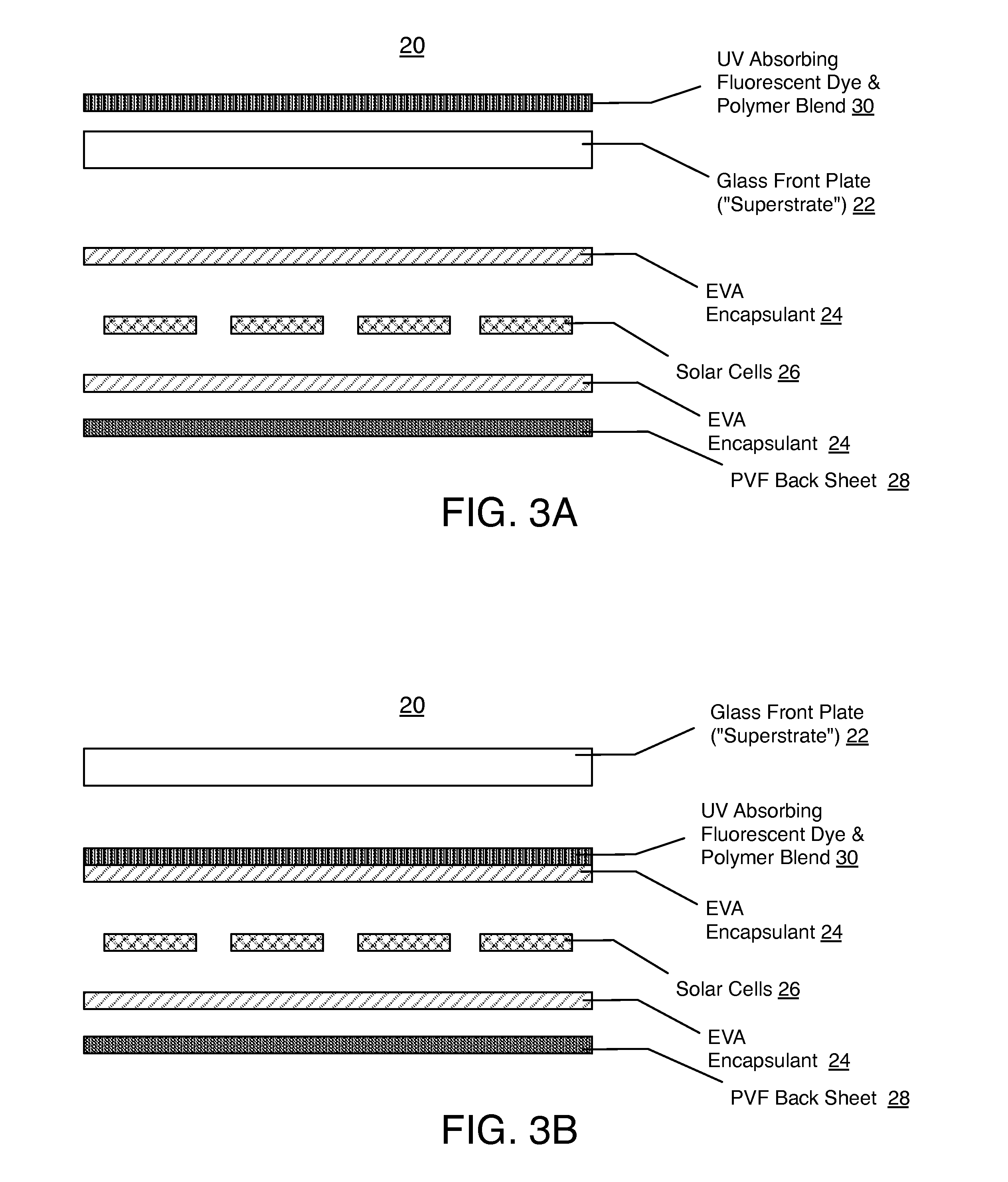Photovoltaic Module Light Manipulation for Increased Module Output
- Summary
- Abstract
- Description
- Claims
- Application Information
AI Technical Summary
Benefits of technology
Problems solved by technology
Method used
Image
Examples
Embodiment Construction
[0020]The present invention relates generally to PV modules comprising rigid solar cells made from, monocrystalline or polycrystalline silicon wafers of various sizes and shapes, an encapsulating material to protect the cells, a top-glass layer and, optionally, a rigid or flexible backing sheet. The present invention is also applicable to many other PV technologies, including thin film and dye-sensitized PV modules. While the remaining description will be presented mostly with reference to PV modules made of rigid poly- or mono-crystalline PV cells, the techniques are equally applicable to thin-film modules comprised of thin layers of photo-reactive materials grown directly onto a transparent conductive oxide layer applied to the back of the top-glass layer. Accordingly, readers should recognize that such thin-film modules are likewise regarded as being within the scope of the invention, as more fully defined by the claims following this description.
[0021]In one embodiment of the pr...
PUM
 Login to View More
Login to View More Abstract
Description
Claims
Application Information
 Login to View More
Login to View More - R&D
- Intellectual Property
- Life Sciences
- Materials
- Tech Scout
- Unparalleled Data Quality
- Higher Quality Content
- 60% Fewer Hallucinations
Browse by: Latest US Patents, China's latest patents, Technical Efficacy Thesaurus, Application Domain, Technology Topic, Popular Technical Reports.
© 2025 PatSnap. All rights reserved.Legal|Privacy policy|Modern Slavery Act Transparency Statement|Sitemap|About US| Contact US: help@patsnap.com



